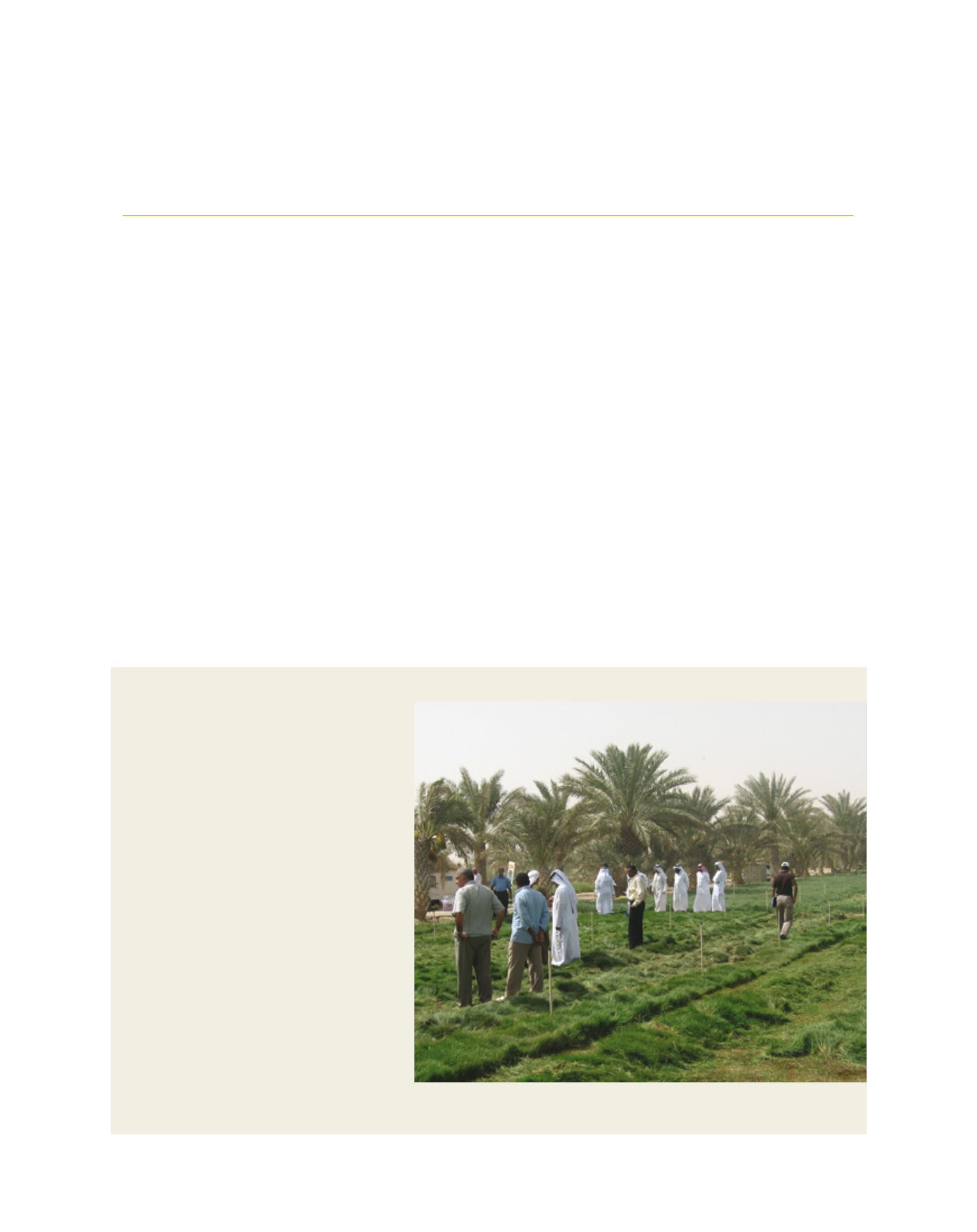

[
] 215
Alternative water resources in agriculture for
improving production and poverty reduction
Shoaib Ismail, Ian McCann, Shabbir Shahid , Fiona Chandler and Mohamed Amrani
International Center for Biosaline Agriculture, Dubai, United Arab Emirates
F
or many countries, especially in the developing world,
agriculture is the engine of growth, and food security and
poverty alleviation are largely dependent on the rural
agricultural economy. Water and land are the most fundamental
resources required for agricultural production and environmen-
tal goods and services. Management of land and water is critical
in overcoming the development challenges of poverty, food and
nutrition insecurity, water scarcity and environmental degra-
dation. So far, land and water management systems have been
able to meet the demands placed on them. However, recent Food
and Agriculture Organization estimates indicate that in order to
meet the projected demand for food in 2050, global agricultural
production must be 60 per cent above the level of 2005-2007.
Food production accounts for 90 per cent of water use in most of
the developing countries. Therefore water resources, in both quan-
tity and quality, are a major factor limiting agricultural
sustainability, poverty reduction and economic develop-
ment in many countries. Despite increasingly efficient
water use, the demand for fresh water has continued to
climb as the world’s population and economic activity
have expanded. According to some recent projections,
in 2025 two thirds of the world’s population will be
suffering moderate to high water stress and about half
of the population will face real constraints in their water
supply. This is especially true in the Middle East and
North Africa (MENA) region, where almost all conven-
tional water resources have already been exploited.
At the same time energy, investments and human
resources are required to make the best use of the
water that is available, especially considering popu-
lation growth and the adverse impacts of projected
W
ater
C
ooperation
, S
ustainability
and
P
overty
E
radication
Case study: Rhodes grass reduction in Abu Dhabi emirate
The Abu Dhabi Government has set a target of reducing
water consumption in the agricultural sector by 40 per cent.
One strategy to meet this target was to minimize the planting
of Rhodes grass which is an excessive water consumer.
Nearly 10,500 Rhodes grass farms in the emirate were
irrigated with more than 59 per cent of the 1.5 billion m
3
of
water that is used for irrigation each year. In most cases,
the grass grown was reported to be irrigated with between
40,000-50,000 m
3
ha
-1
. However, the annual gross water
demand for Rhodes grass (under modest efficiency) was
estimated to be about 30,000 m
3
ha
-1
resulting in water
wastage. Furthermore, Rhodes grass is not very salt-tolerant
and many of the farms in the Abu Dhabi emirate (especially
in the Western region) had become salinized and could not
sustain economic productivity.
There are many other salt-tolerant forages that could
grow under higher salinities (>20 dS m
-1
, >14,000
parts per million) and have better nutrient quality. The
ICBA-Abu Dhabi Farmers Service Center project is an
initiative to re-vegetate abandoned saline lands with
salt-tolerant forages as an alternative to Rhodes grass.
The project aims to develop demonstration farms where
the farmers and policymakers will be able to witness
how appropriate crops and crop management can
turn productivity around. The project liaises between
the research, extension, end user and implementing
agencies. The outcomes are linked to the capacity
building of research and extension staff and farmers,
both on new and emerging crops and forages for salt-
affected farms and on the local production of seeds
(salt-tolerant forages) for the farmers.
The ICBA-Abu Dhabi Farmers Service Center project is helping to re-vegetate abandoned
saline lands with salt-tolerant forages
Image: ICBA


















